
Last week I shared my favorite Greek Seasoning blend as part of my ongoing Seasoning Series, which is dedicated to brining you guys awesome, AIP friendly seasoning blends that you can make and use at home. No filler, no weird stuff, no hidden grains, gluten or dairy and no overpriced garlicky salt powder included! Here I’m going to show you one of my favorite ways to turn my Greek Seasoning into an obnoxiously delicious marinade that helps make this weeknight-friendly Marinated Greek Pork Tenderloin a snap.
When I was figuring out what I wanted to cook up to showcase my Greek blend, I kept coming back to the wonderful street food, souvlakia, that is so common all over Greece. Those meaty treats on a stick are a delightful real food fast food: the meat is marinated with lemon, red wine vinegar and oregano, before being threaded onto skewers and grilled. They’re the perfect example of bright, shiny flavors that come together in a way that’s greater than the sum of their very simple culinary parts. (I thoroughly maintain flavors can be “shiny”. And not just because I can’t let go of my Firefly obsession. Still). I decided to stick with those classic flavors, but add a little more depth by using my Greek Seasoning instead of just straight oregano.
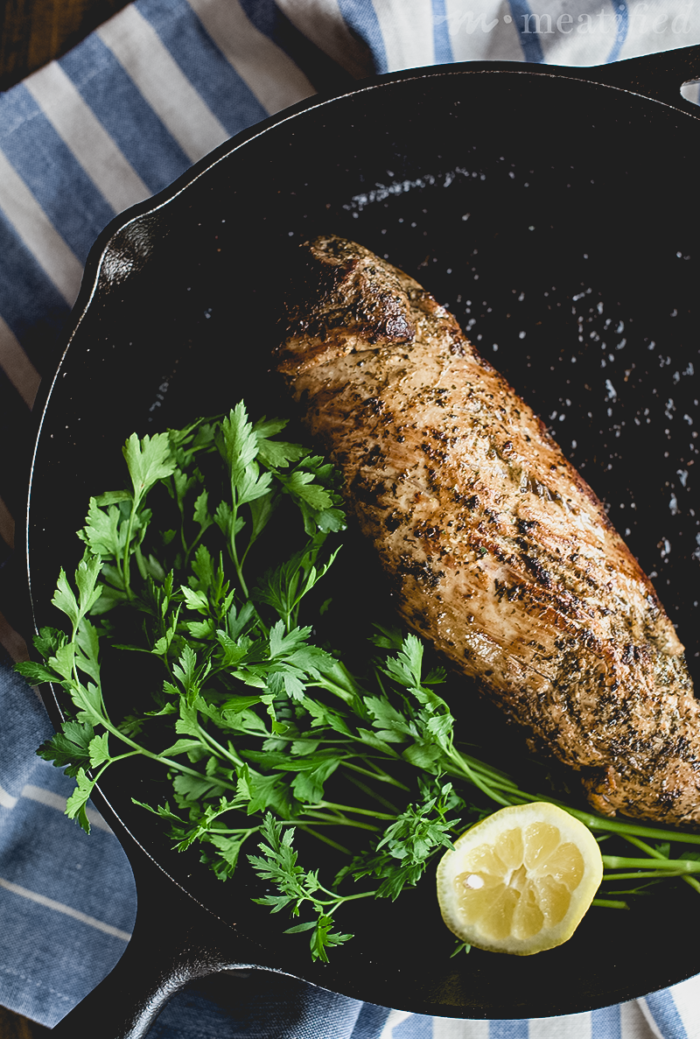
I know that most people immediately jump to lamb when they conjure up what Greek cuisine looks like, but traditionally, souvlakia are made with pork, or sometimes chicken. I’m not going to swear blind that you can’t find a lamb souvlaki to be had, but you’d be more likely to run into one of those meat sticks outside of Greece, since despite the stereotypes, lamb is more of a treat meat than an everyday thing. There is a very similarly flavored lamb dish, marinated in oregano, lemon juice, herbs, thyme and pepper called paidakia, but that is strictly lamb chop territory, grilled until crispy. You don’t take good lamb and chop it up into bite size pieces.
Returning to the pork at hand, traditional souvlakia might be made with pork shoulder or loin, but as I didn’t want to have to buy a big ass hunk of shoulder or mess around with soaking skewers and whatnot, I decided to cross the traditional(ish) marinade with a whole pork tenderloin. That way there was no soaking, threading and multiple meat sticks to turn, but I was still keeping all the good stuff: plenty of herbs in the marinade, lots of lemon juice and a smidge of red wine vinegar. Didn’t hurt that pork tenderloin was on sale this week, either!
Although I fully intended to grill up my Marinated Greek Pork Tenderloin, nature had other plans as she uncharacteristically dumped a thunderstorm on our heads in the middle of what’s been the hottest end of June I remember here. Seriously, what are the odds that the week I decide to put a grilling recipe on here, the grilling becomes not even possible? The Grill Gods are against me! They really are, because the grill is totally Mr Meatified territory, so I thought I was going to get away without actually cooking dinner. Oh well!
You absolutely can make up this recipe on the grill to maximize all that extra smoky goodness you’ll get, but if you want a speedy, easy weeknight version, this recipe is a keeper! You can easily marinate the meat the day before without any problem, so I’d say that would be a great 5 minute task for a Sunday so you could enjoy this Greek pork tenderloin on a Monday night. You’ve got time to make up a salad while the pork is drying off pre-sear or while it’s in the oven or while it’s resting, so it’s easy to grab a quick side or two in that hands off time.
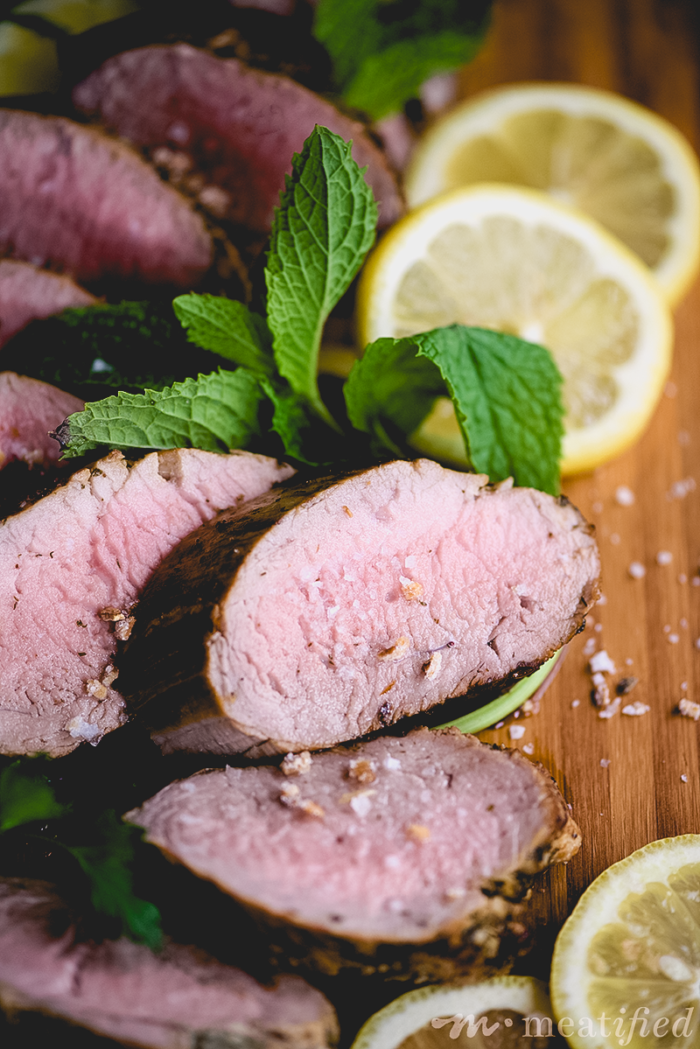
When it comes to prepping a pork tenderloin, you’ve got to trim off any loose pieces of fat, as well as the “silver skin”. You’ll see on most pork tenderloins that there’s a part of the meat that is a slightly irridescent white color. You might think it’s fat, but it’s really more like a membrane coating part of the length of the tenderloin. If you leave it on the meat while you cook it, it will become super chewy and inedible, so you don’t want that! You’ll need to carefully trim the silver skin off the pork tenderloin.
I highly recommend that if you are cooking this up on a weeknight indoors, you use a large 12 inch cast iron skillet. It will create a fantastic sear, which you’ll want to make up for its non-grilled status, plus you can transfer cast iron straight from the stovetop to the oven to finish up cooking. No need to mess around with a second oven proof pan or tray that way. I also recommend that you use a dinky little meat thermometer to gauge how well your pork is doing. I’ve given suggested cooking times in the recipe below, but the weight, thickness and shape of your pork tenderloin will all affect how long it needs to be seared and finished in the oven. Going by internal temperatures as I’ve noted in the recipe will be much more accurate!
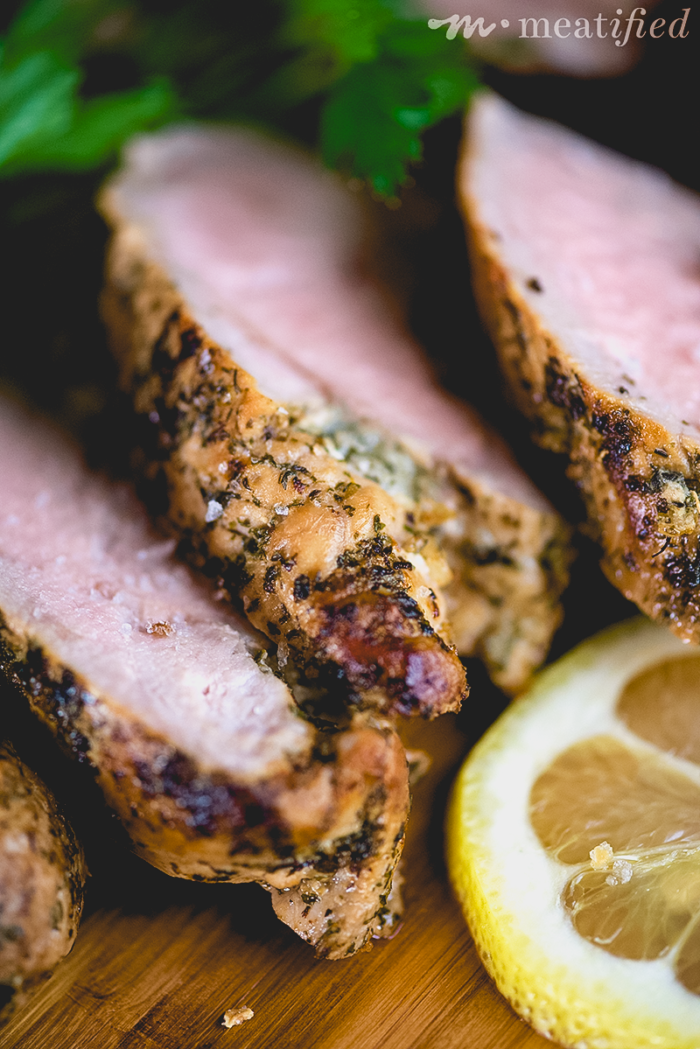
The temperatures I’ve suggested will give you a nice medium rare finish to the Greek pork tenderloin: it will have a golden crust, be juicy and tender when sliced and have just a hint of pink in the middle. Don’t be scared to “undercook” your pork by pulling it out of the oven at 130 F / 54 C in the center: the internal temperature will rise and the meat will continue to cook as it rests, especially since a tenderloin is a small and delicate piece of meat. If you do want to cook your pork longer, however, simply increase the cooking time in the oven.
You can use the fat of your choice when it comes to searing the pork tenderloin. Since I had some lard rendered from a batch of my Pork Belly Carnitas, using that just made sense, but you could use whatever high temperature friendly fat you like. Avocado oil, organic pork lard and rendered bacon fat would all work wonderfully here. Whichever you choose, don’t be fat phobic: make sure you add enough fat to coat the bottom of the skillet generously, since you’ll want to use that fat to baste the pork as it sears, so that you get a lovely color on your tenderloin.
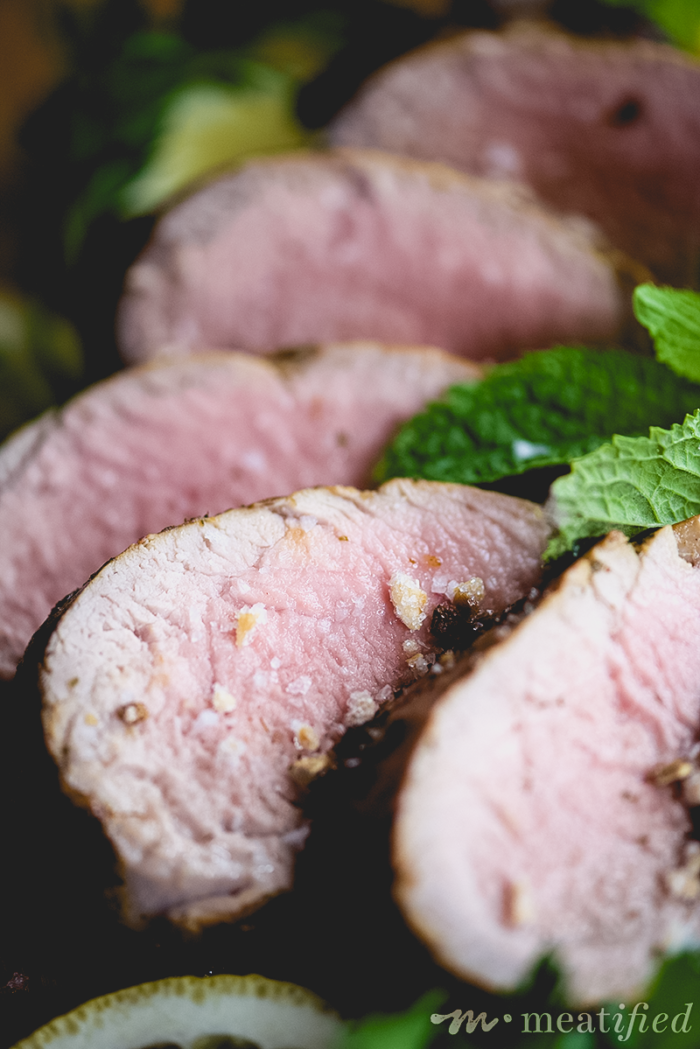
Marinated Greek Pork Tenderloin
Marinate this souvlaki-inspired Greek pork tenderloin ahead of time & it will make a great weeknight meal. All the flavor, none of the fuss of the original.
Ingredients
For the marinade:
- 1/4 cup + 2 tbsp / 90 ml extra virgin olive oil
- 1/4 cup / 60 ml fresh lemon juice, or preservative free bottled lemon juice
- 2 tbsp / 30 ml red wine vinegar
- 2 tbsp / 12 g Greek Seasoning (see notes)
- 1/4 tsp fine sea salt
For the tenderloin:
- 1 1/2 lb / 680 g pork tenderloin
- Fat for searing: olive oil, avocado oil or organic pork lard all work well here
Instructions
MARINATE: Trim the pork tenderloin of any loose pieces of fat and remove any silver skin you can see on the surface of the meat. Place the trimmed pork tenderloin into a freezer bag and add all of the marinade ingredients. Massage the marinade through the bag so that the ingredients are evenly combined and the meat covered. Carefully fold the bag over from the bottom to push out as much air as possible, rolling the tenderloin so that all of the meat is in contact with the marinade. Seal the bag, pop it on a plate and refrigerate the marinading tenderloin for 3 hours or up to overnight.
DRY: When you’re ready to cook, remove the tenderloin from the marinade and pat it dry with some paper towels. We don’t want the meat to have too much moisture on the surface as that will prevent getting a nice sear, so I like to let the patted dry tenderloin sit out on a plate at room temperature for about 15 minutes before cooking. Discard any excess marinade.
SEAR: Preheat the oven to 350 F / 175 C. Heat a 12 inch cast iron skillet over medium heat, then add the lard or fat of your choice: you want enough to coat the pan generously so that you can baste the meat later. When the fat is hot, add the pork tenderloin to the skillet and sear it until every side of the meat is a nice golden brown and the center of the meat is 90 F / 32 C when measured with a meat thermometer at it’s thickest part, about 10 – 12 minutes. Baste the meat with the fat in the pan each time you turn it and make sure to reduce the heat a little if the fat ever gets hot enough to spit or the meat is starting to blacken rather than brown.
ROAST: Remove the skillet from the heat and transfer it to the preheated oven. Cook until the center of the tenderloin reaches 130 F / 54 C at its thickest part, about 10 – 12 minutes. Transfer the meat to a chopping board to rest for an additional 10 minutes before slicing and serving.
Equipment
 Buy Now →
Buy Now →  Buy Now →
Buy Now →  Buy Now →
Buy Now → 
Preservative Free Bottled Lemon Juice
Buy Now → Buy Now →
Buy Now →  Buy Now →
Buy Now →  Buy Now →
Buy Now →  Buy Now →
Buy Now →  Buy Now →
Buy Now → Notes
The tablespoon measurement given for the Greek Seasoning is for the hand mixed, non-milled version. If you chose to grind it to a fine powder, the volume measurement will be inaccurate, so you will need to measure the seasoning blend by weight in grams, as stated.
DID YOU MISS MY EARLIER AIP SEASONING SERIES POSTS?
Week 1: Taco Seasoning + Ultimate Loaded Nachos
Week 2: Dairy Free Ranch Seasoning + Ranch Guacamole
Week 3: Persian Seasoning + Herbed Persian Meatballs with Apricots
This post was included in the AIP Recipe Roundtable.


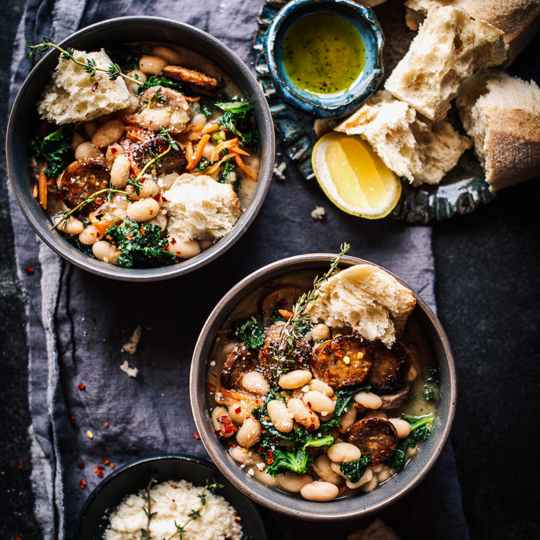

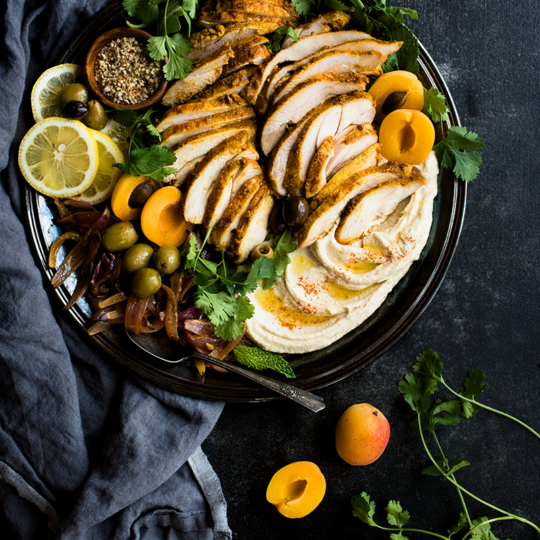

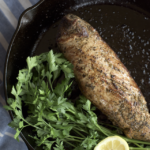
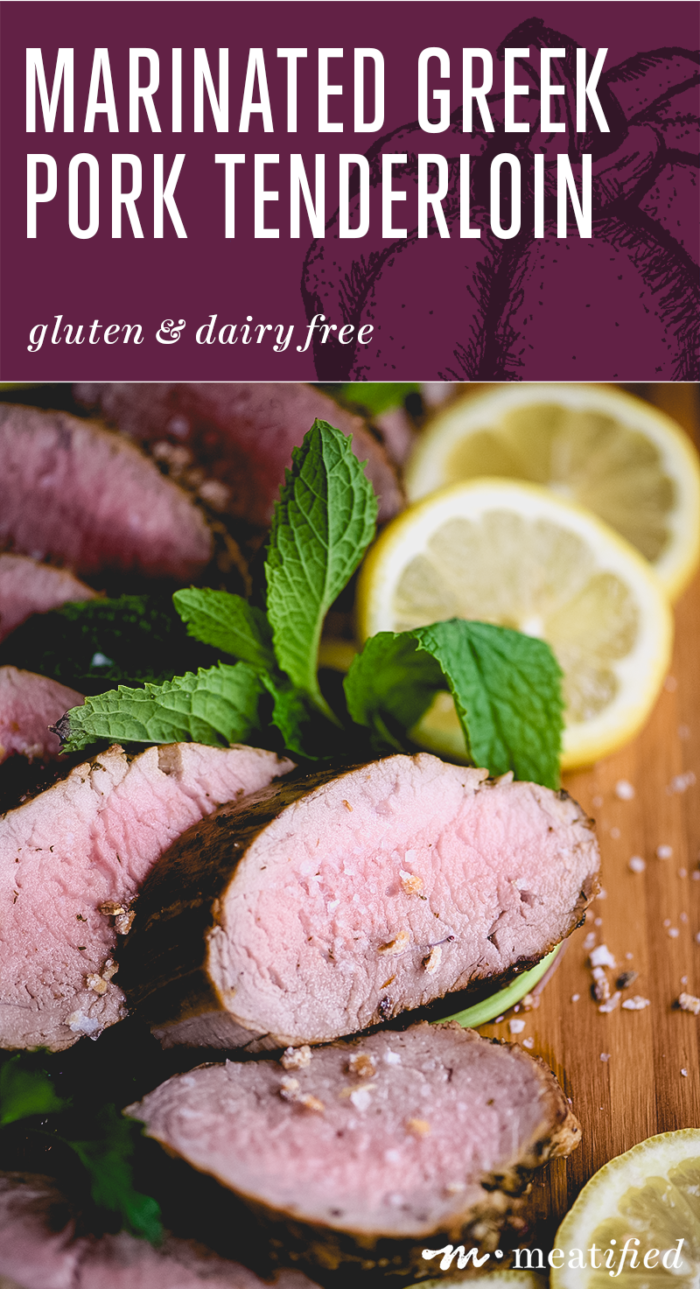
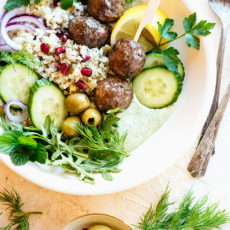
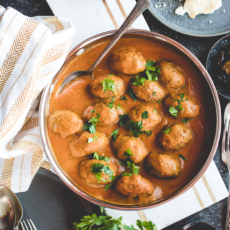
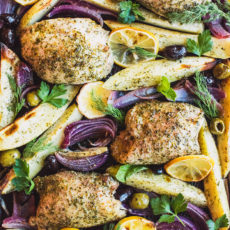
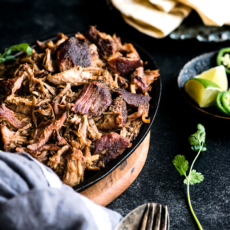
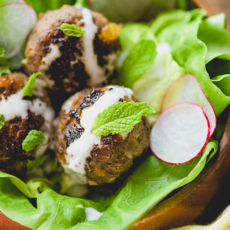











This was good but 130 degrees Fahrenheit was too red/pink for the tenderloin. I like mine a tad more done.
My favorite way to eat pork tenderloin! Amazing meal, everything was perfect.
Amazing! This is so delicious! I did cook it a little longer than 130 degrees, but it tasted so good. We will definitely have this again.
I’m so glad you enjoyed it! I’m a little on the edge with my preferred pork temperature for my husband’s liking too, ha! 🙂
This looks so good! What a great meal for a weeknight or to make for guests!